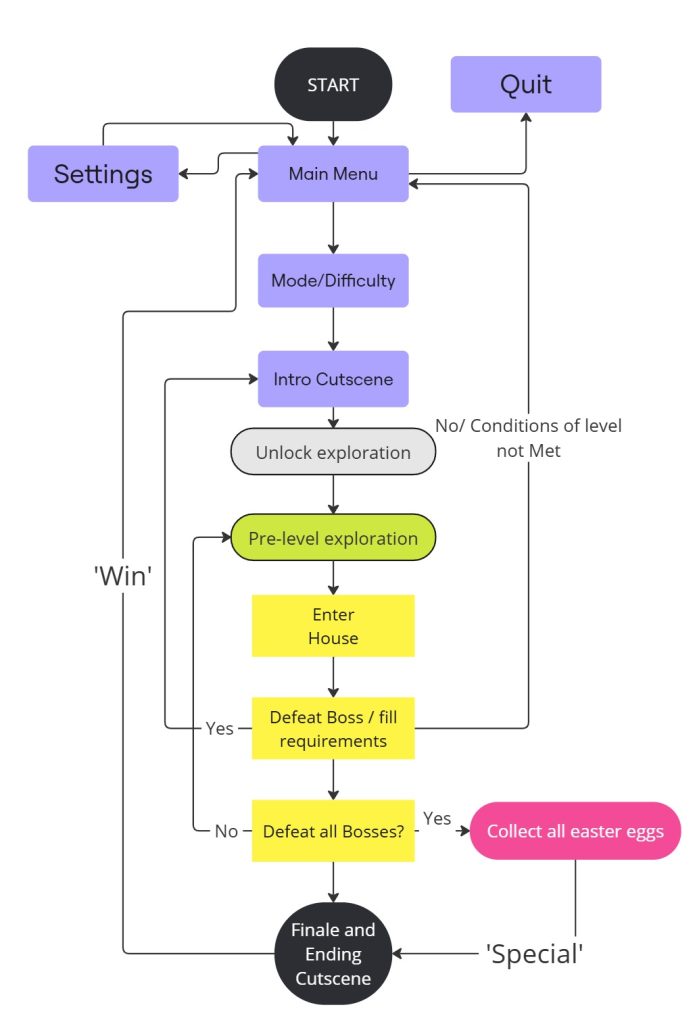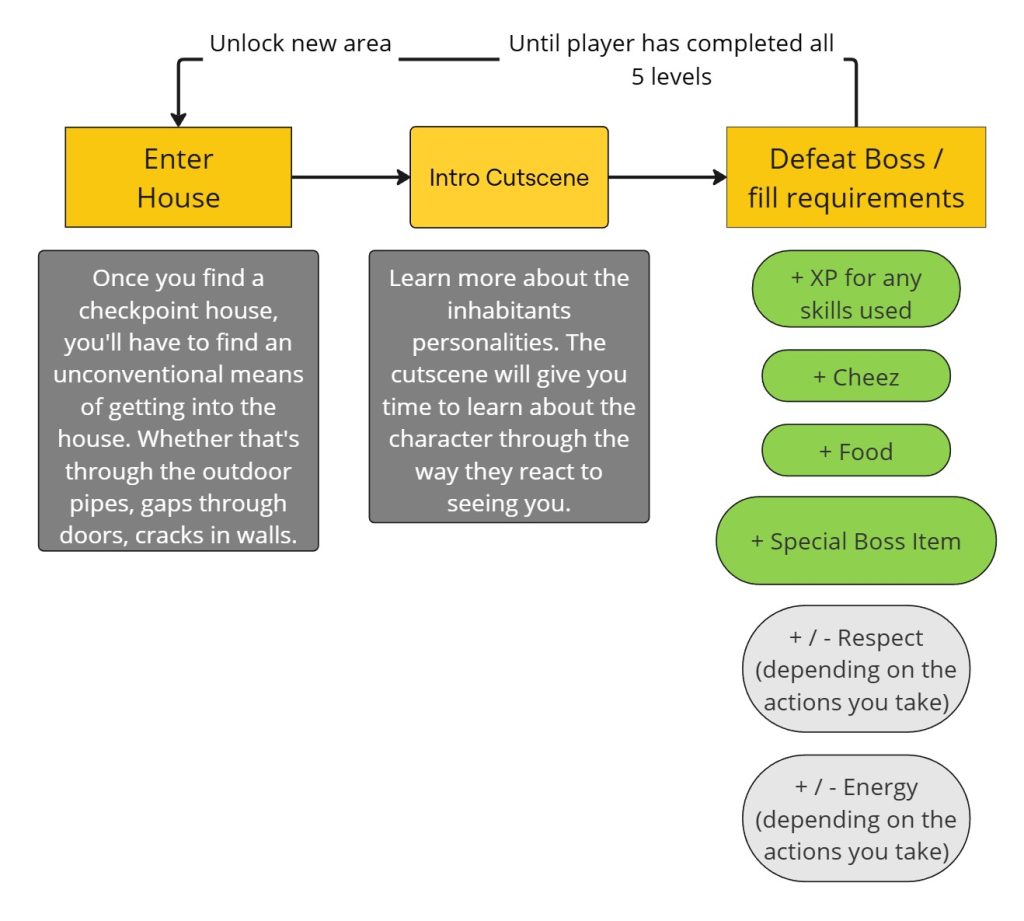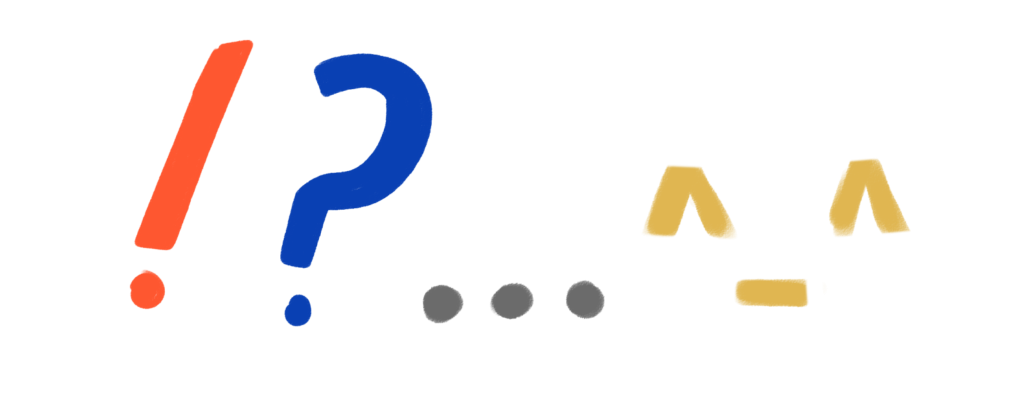The main game loop of Oh, Rats! is inspired by Splatoon 3‘s (SPT3) Campaign mode and Persona 4 (P4) Cutscenes before introducing important events such as new bosses/characters. P4 is specifically for the character introductions in the TV world and exploration between major bosses, and SPT3 is specifically for the intro cutscenes and level/upgrade progression.
Overall Core Gameloop
The overall core game will be structured like this. After you unlock exploration, you will have free reign to explore before entering each level.

Level Gameloop
The overall level game loop is a simple cycle of entering a house, getting a cut scene and defeating the boss.

In-between Levels Exploration Gameloop (Meta Gameloop)
The Meta game loop gives the player the most time to explore. Systems like respect will come into play as you navigate the world, and it’s important players take advantage of this for the best User Experience (UX).

Human Archetype System (4 types)
Humans and some enemy animals will adopt an archetype system. Each will be automatically and randomly assigned (except from quest NPCs and Level Humans which have set archetypes that you have to discover). They are colour-coded from worst to best, and you will learn of their archetype through context clues like the examples below.
- Scared (More likely to scream and cower away, alerting others of your presence)
- Disgusted (More likely to move away or try to shoo/chase you away)
- Indifferent (More likely to leave you alone if you don’t bother them too much, prone to changing archetype to the other 3 depending on actions)
- Benevolent (More likely to leave you alone, play with you or try to adopt you)
NPC States
When a person/NPC notices you, depending on what personality the human has, they will enter either a threatened or engaged state. They will be threatened if they are the scared or disgusted archetypes, meaning that they will be more likely to do actions like scream, shoo, and freeze. They will be engaged if they are indifferent or benevolent archetypes, this means they are more likely to leave you alone, talk to you, play with you or “try to adopt” you.
When not engaged or threatened, a person/NPC will return to their default state and task.
Archetype icons in-game

Inspired by anime emotive cues, I thought of making icons that could indicate a human’s reaction to you, as there should be a visual cue to accompany an audio cue. I chose strong colours like Red, Blue, Grey and Yellow as it gives a strong indication of emotions. These are mock-ups of how I’d like them to be at a baseline, but in the final version of the game, they could be more stylised.
- The ‘!‘ indicates surprise, it is a general reaction but if it stays on the screen long enough, the character is scared.
- The ‘?‘ is a question, so the person is confused as to why you are here. This could be followed by ‘!‘ or stay a question if you don’t do anything erratic (like jumping around/getting into characters’ personal spaces). If so, that person is indifferent.
- The ‘…‘ also indicates confusion or contemplation. The character will usually stop what they are doing and back away. If it stays like this, the character is disgusted.
- The ‘^_^‘ represents cuteness or excitement, the person has taken a liking to you or finds Rats/animals cute. If so, the person is benevolent.
This video demonstrates a character experiencing the “Surprise” icon at first, before revealing their true personality as a benevolent character who thinks you are cute. I used some sound effects that are in the Sound & Music Bible section of my GDD to further illustrate what it would be like in the game.
Program used: Sony Vegas Pro 13
Sound Effects
Nature https://www.youtube.com/watch?v=xNP2_1a9ddo
Spotted! Freesound – Enemy Spotted 3 by unfa
Glitter Jingle Glitter Sound Effect for Music or Editing
3 thoughts on “Gameplay”